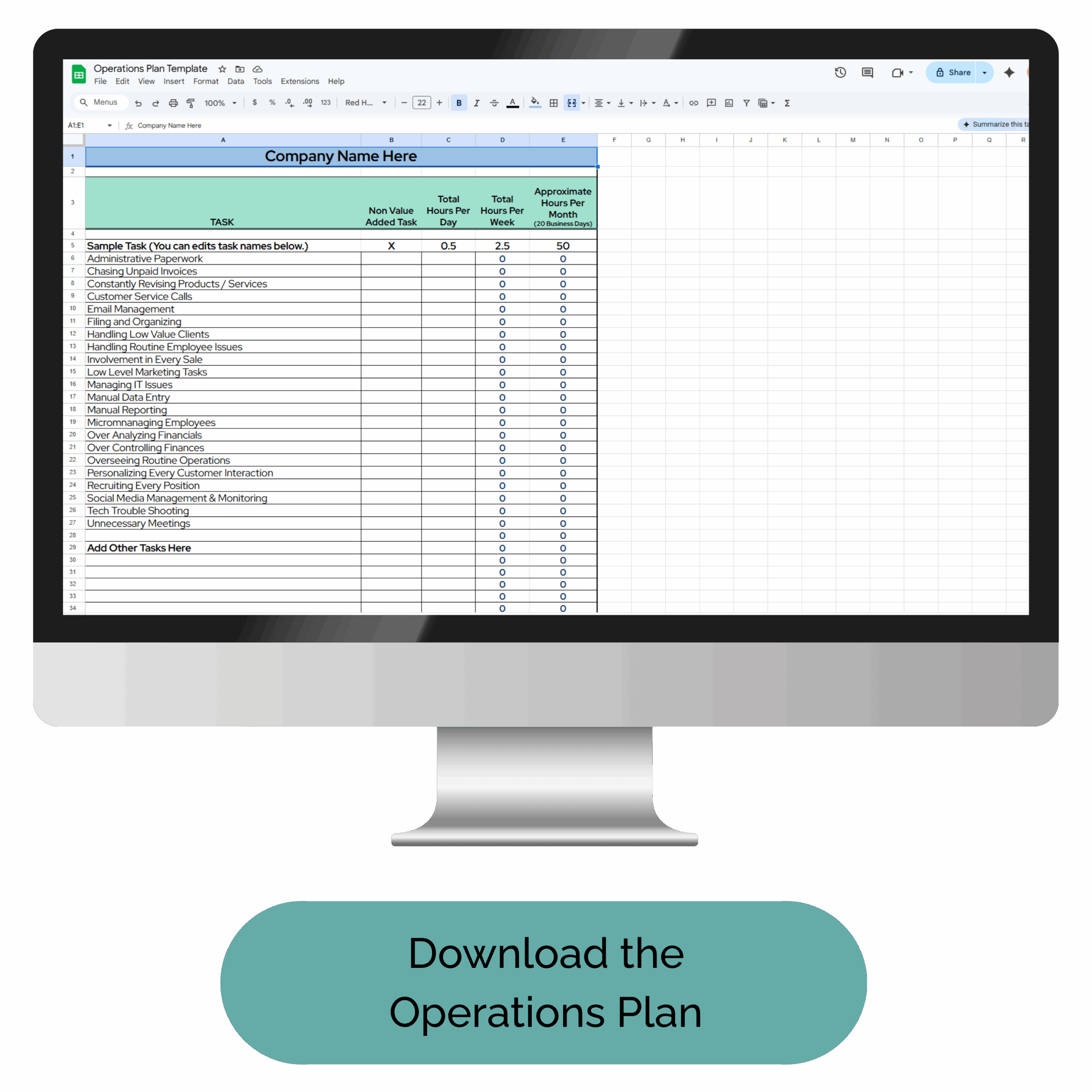How to Improve Team Productivity in a Janitorial Business

How to Improve Team Productivity in a Janitorial Business
In a janitorial business, team productivity is directly tied to customer satisfaction, employee retention, and profitability. It’s not just about completing tasks—it’s about building high-performing teams that work efficiently, collaborate effectively, and contribute to the bigger picture.
Whether you’re managing a small crew or multiple locations across time zones, optimizing your team’s productivity requires intentional leadership, the right tools, and a focus on employee engagement. Let’s break down effective ways to build a productive team using best practices that work in the real world.
17 Ways to Improve Team Productivity In a Janitorial Business
1. Set Clear Roles and Responsibilities
One of the best ways to improve your team efficiency is by defining specific tasks for each member. Individual team members must know what they’re responsible for on any given day.
This is a great way to reduce confusion, improve individual productivity, and create a healthier work environment. A clear to-do list aligned with well-defined goals gives your team direction—and happy employees are more productive employees that can reach their full potential and do their best work.
2. Create and Communicate a Clear Vision
Your team can’t move in sync without a clear vision—your “north star.” The team leader or business owner should share this vision during team meetings, onboarding of new employees, and regular check-ins. It’s important to establish open communication with your employees.
When every cleaner—from the floor tech to the site supervisor—understands the common goal, the quality of work improves across the board. Make sure the vision is connected to meaningful work, not just cleaning quotas.
3. Use Powerful Tools and Project Management Software
Project management tools like Swept, Jobber, or Asana help you schedule, assign, and track individual contributions. These powerful tools also allow for regular feedback, especially when managing remote work teams across different time zones.
Using the right project management software helps reduce misunderstandings, align priorities, and ensure tasks are being completed on time.
4. Establish Clear Goals and Specific Tasks
Clear expectations and specific goals help individuals understand their purpose. Don’t just say “clean the office”—define it:
- Dust all surfaces
- Sanitize door handles
- Vacuum all common areas
- Restock restroom supplies
The more detailed your instructions, the less room for error—and the better your overall team & individual employees performance. In addition, having specific tasks means that your team can ensure they miss less, meaning you’ll have more complete tasks being done each time.
5. Build Trust Through Open and Honest Feedback
Trust is the glue of a productive team. Implement feedback sessions where honest feedback is not only welcomed but encouraged.
When you build trust, you encourage your team to speak up when something isn’t working. This helps improve employee satisfaction and your team’s strengths.
6. Offer Skill Development and Employee Training
A productive team is a knowledgeable one. If your staff isn’t trained properly, it slows down your overall team performance and leads to mistakes. Offer employee training that covers:
- Safety protocols
- Advanced equipment handling
- Communication techniques
- Time management
Training should be ongoing, not just part of onboarding. Cross training on different tasks builds flexibility and strengthens your team’s productivity. Encouraging new skills boosts confidence, increases employee satisfaction, and supports continuous improvement across the board.
7. Encourage Team Collaboration with Daily Standups
Daily standups are a great way to get the whole team aligned before a shift begins. These short meetings help:
- Clarify daily priorities
- Assign specific tasks
- Address concerns early
- Celebrate small wins
They’re especially helpful when crews are working on different tasks or across locations. Standups create space for effective communication, reinforce your common goal, and build accountability for individual contributions. They take little time but go a long way in improving team collaboration and focus.

8. Promote a Positive Work Environment and Team-Building Activities
A positive work environment leads to higher productivity and better employee engagement. Consider:
- Team lunches
- Birthday celebrations
- Recognition boards
- Friendly competitions
These team-building activities build trust, boost morale, and help employees feel seen beyond their daily tasks. When people enjoy coming to work, they do better work and contribute more to the team’s strengths. Even simple gestures create a healthy work environment that supports long-term success.
9. Track Individual Performance Using Productivity Metrics
Use productivity metrics to see how much work is being completed by each team member on a given day. Track:
- Time on task
- Missed tasks
- Customer complaints
- Rework frequency
These numbers help identify where skill development is needed and where your team’s productivity can improve. Reviewing individual performance regularly also creates opportunities for honest feedback and growth—while reinforcing high standards across your entire team.
10. Practice Regular Check-Ins and Feedback Sessions
Don’t wait for annual reviews to check in with your team. Regular check-ins—whether weekly or biweekly—are a great way to track progress, offer honest feedback, and address challenges early.
These meetings give employees space to share how they’re managing their workload, personal development goals, or concerns about work-life balance. It also opens the door for you to offer encouragement, troubleshoot issues, or adjust assignments based on real-time needs.
Over time, these short conversations lead to stronger relationships, increased employee engagement, and a more productive team overall.
11. Optimize Scheduling and Work Hours
An optimized schedule directly impacts employee productivity. Overworked team members get tired, frustrated, and make more mistakes—which affects the quality of work and morale.
Use scheduling tools to create fair, efficient shifts that rotate different people across different tasks to prevent burnout. Spread out high-demand jobs so top performers aren’t always carrying the load. Pay attention to overtime trends and leave room for flexibility when personal needs arise.
The right schedule creates a more balanced workload, improves job satisfaction, and helps your entire team perform to their full potential.
12. Provide the Right Tools and Available Resources
Even the hardest-working team can’t deliver better results without proper equipment. Outdated vacuums, broken dispensers, or missing supplies slow everything down and frustrate employees.
Make sure every crew has access to the right tools and enough available resources to complete their jobs efficiently. This includes everything from PPE to well-maintained machines to backup materials on-site.
Supplying what your team needs shows respect for their time and effort—and it directly improves your team’s productivity.
13. Recognize Hard Work and Provide Positive Reinforcement
When someone consistently shows up and does good work, don’t let it go unnoticed. A little recognition can go a long way in boosting morale and employee satisfaction.
You don’t need a huge budget to make a big impact. Consider:
- Spot bonuses
- Shoutouts in team chat
- Gift cards or extra PTO
Public recognition helps reinforce the behaviors you want to see more of and encourages others to step up too. When individual team members feel valued, they’re more likely to stay motivated and engaged with their work.
14. Leverage Collaboration Software for Remote Work
If you manage teams across multiple sites or time zones, staying connected can be a challenge. That’s where collaboration software comes in.
Tools like Slack, Microsoft Teams, or Trello allow your team to:
- Share updates
- Track progress
- Ask questions
- Post announcements
These tools make effective communication easier and give the whole team a space to stay aligned—whether they’re cleaning side-by-side or working at different locations. Better connection means better teamwork and fewer dropped tasks.
15. Make Use of Short Breaks to Reboot Focus
Cleaning is physically demanding. Without breaks, even the best employees hit a wall. Encouraging short breaks—5 to 10 minutes between tasks or zones—is a better way to help your team stay sharp and focused.
These small pauses can prevent burnout, improve mood, and increase the quality of work throughout the shift. Plus, they show your team that you care about their well-being, which plays a big role in overall employee productivity.
16. Assign a Team Leader or Project Manager for Every Large Project
Bigger jobs need clear oversight. Assigning a team leader or project manager ensures someone is keeping track of tasks, managing timelines, and helping resolve issues on the spot.
This role doesn’t have to be overly formal—but it does need to be clear. Having a go-to person on each site improves accountability, keeps the bigger picture in focus, and allows the rest of the team to stay on track with their specific tasks.
It’s a simple way to increase structure and build high-performing teams.
17. Review, Reflect, and Encourage Continuous Improvement
Don’t just move from one job to the next without stopping to reflect. Weekly or monthly reviews are a powerful tool for spotting patterns, learning from mistakes, and improving systems.
Ask your team what’s working, what’s slowing them down, and what could make the job easier. Then use that feedback to refine processes or adjust tools and schedules.
When you promote continuous improvement, your team knows their input matters—and your business becomes more efficient, agile, and productive over time.

Frequently Asked Questions
1. How do I measure team productivity in a janitorial business?
Use productivity metrics like time per job, quality inspection scores, and task completion rates to evaluate overall team performance. You can also track rework frequency, missed tasks, and customer feedback to gain deeper insight into quality and consistency. Regular reviews of these metrics help you spot trends, identify training needs, and recognize high-performing team members.
2. What’s the best way to manage a remote or multi-location team?
Use project management software and collaboration software to centralize schedules, communications, and performance tracking. Tools like Swept, Jobber, or Microsoft Teams help keep everyone connected and accountable, even across time zones. Consistent communication and clear expectations ensure that remote crews stay aligned with your business goals.
3. How can I improve employee satisfaction?
Foster a healthy work environment, offer employee training, and practice positive reinforcement for good work. Check in regularly, show appreciation, and make sure employees have the tools they need to do their best work. When people feel supported and valued, their motivation and long-term commitment naturally increase.
4. What role do team leaders play in productivity?
Effective leaders can manage performance, resolve conflict, and keep the entire team aligned with your clear vision. They provide structure, set the tone for communication, and ensure that daily operations run smoothly. A strong team leader helps build trust and keeps everyone focused on the common goal.
5. How do I prevent burnout among cleaning staff?
Offer fair work hours, schedule short breaks, promote work-life balance, and recognize hard work consistently. Be mindful of overtime and rotate demanding tasks to reduce physical and mental fatigue. A rested team is a more productive, engaged, and reliable team.
6. What’s the next step if my team isn’t hitting productivity goals?
Start by reviewing individual performance, revisiting specific goals, and checking whether they have the right tools to succeed. Look at your workflows, team structure, and communication methods to identify any gaps or roadblocks. Involve your team in finding solutions—they often have valuable insights that can drive meaningful improvement.
In Conclusion: The Next Step Toward a Productive Team
If you want a more productive team, you have to build it intentionally. That means hiring the right people, assigning specific tasks, offering new skills training, and supporting your team at the individual level. Productivity isn’t a one-time fix—it’s a habit of leadership, effective communication, and continuous learning.
 The strategies we’ve covered—from setting clear goals to offering consistent feedback—are all about helping your team work smarter, stay engaged, and contribute to the bigger picture. And while the day-to-day demands of running a janitorial business can feel overwhelming, having a structured plan in place makes everything more manageable.
The strategies we’ve covered—from setting clear goals to offering consistent feedback—are all about helping your team work smarter, stay engaged, and contribute to the bigger picture. And while the day-to-day demands of running a janitorial business can feel overwhelming, having a structured plan in place makes everything more manageable.
That’s where the free Operations Plan Template comes in.
This practical tool helps you organize your departments, clarify responsibilities, assign ownership, and create consistent workflows—so your entire team knows what needs to be done, when, and by whom.
Whether you’re scaling, hiring, or just trying to streamline what already exists, the Operations Plan Template gives you a simple, repeatable framework to keep your business running efficiently and your team focused on what matters most.
Download the free Operations Plan Template now and take the next step toward a more productive, aligned, and confident team.

